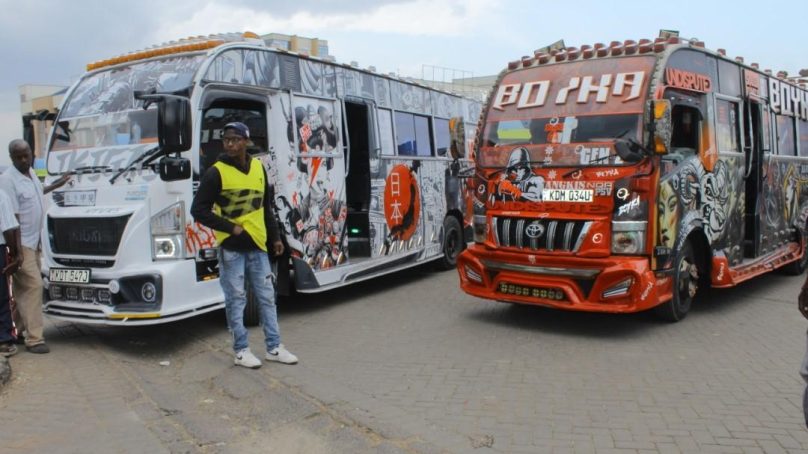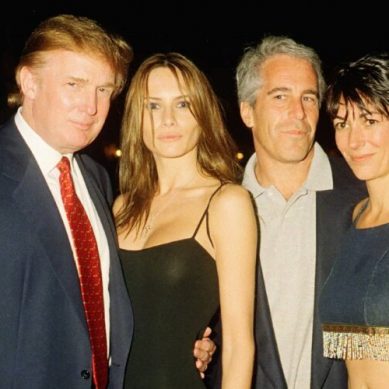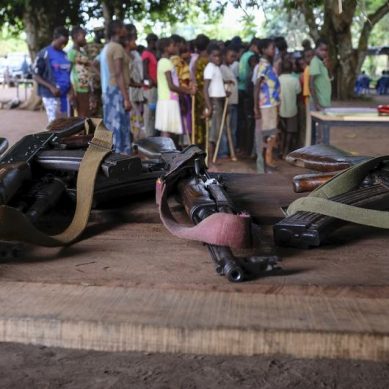
For a long time, Ngong Town in Kajiado North, has been a centre of creativity, opportunity, innovation, and job creation.
Through the public service vehicles (PSV) matatu industry, Ngong has is fast-outpacing Nairobi as the centre of art that manifests on vehicles colloquially known as Nganyas to distinguish it from the ordinary pubic service vehicles.
This is emerging urban culture that the residents of the satellite town identify with and have accepted it as part of their life that infuses creativity in business for higher returns.
The youth, especially, express themselves through art that features fascinating designs in the vehicles that leave the citizens awed by talent of the young generation, which many times is an expression of rebellion, resilience and frustration with the politics of the day.
The PSVs or matatus – mini-buses – that ply the Ngong-Nairobi road are “travelling centre” of artistic expression that is characterised by vivid graffiti, coarse music, attractive interiors and well-thought-out lighting patterns that serve as both transport and talent showmanship.
For decades, these matatus have been central to the mobility of millions of residents in the area, but beyond the transportation of people, the vehicles represent a thriving urban culture that has greatly influenced music, fashion, language and visual art.
Through art, what began as a basic mode of transport has now evolved into an entire industry that supports a lot of jobs in Ngong town, located some 27 kilometres south of Nairobi. Drivers, conductors, graffiti artists, sound technicians, interior designers and mechanics are among the people who rely on the industry for a living.
The government supports the transport industry through bodies like the National Transport and Safety Authority (NTSA) through regulations that ensure compliance with traffic laws and enhancement of road safety.
This move is intended to ensure that passengers are safe while commuting in the vehicles. It also ensure efficiency in the sector to support businesses that enhance and improve living standards.
The modernisation of public transport through projects like the Nairobi Rapid Transit (BRT) system has integrated matatus in a way that preserves their role while upgrading the commuting experience of PSV users.
Simon Mwangi, a veteran in the industry, says the designs and styles play a key role in the transport business because they help attract customers who always prefer to commute in vibrant matatus.
Mwangi observes that, through the art a bus stands out from the rest in a crowded industry, in which competition is fierce and thinking outside the box holds off rivalry that can at times be brutal.
“Matatu culture is part of our life. We have embraced and made it our identity. The artwork, the language and the music connect us to our customers, making it easier, faster and more efficient to interact and eventually do business in a seamless manner,” Mwangi explains.
Most matatus that serve Ngong town operate under NTSA-approved Saccos such as Nangkis, NTVRS Sacco, and Luminous Sacco on key routes that include Ngong-Nairobi CBD, Ngong-Karen and Ngong-Kiserian.
Although the matatu culture is a pride of the region, local residents have mixed views on a sector that elicits appreciation and condemnation on equal measure.
Martha Moraa, a businesswoman in Ngong Town, says that despite the ‘nganyas’ being vital to the transport needs of local people, issues such as reckless driving, unruly behaviour, loud music and selective enforcement of traffic rules need to be urgently addressed.
“Matatus brought progress, but respect is important, discipline is key and conductors should avoid abusive language. These vehicles make transportation much easier and affordable but loud music and reckless driving worry me a lot, ‘said Moraa.
For Ngong residents, matatu culture is both a lifeline and a challenge. While it reflects the spirit and innovation of a growing town, they call for greater responsibility, courtesy and safety in order to ensure the system works for everyone.
The matatu culture in Ngong reflects a broader national phenomenon that blends transport, entrepreneurship, innovation and urban culture.
The sector has evolved from basic commuting to a world of customised vehicles, graffiti art, booming sound systems, street slang, and an economy driven largely by the youth.
As the government works with other stakeholders to improve transport infrastructure, it also recognises that the matatu sector holds a special place in the hearts of citizens. It’s a place where culture, economy, and innovation meet.
- A Tell Media / KNA report / By Edwin Gathii








